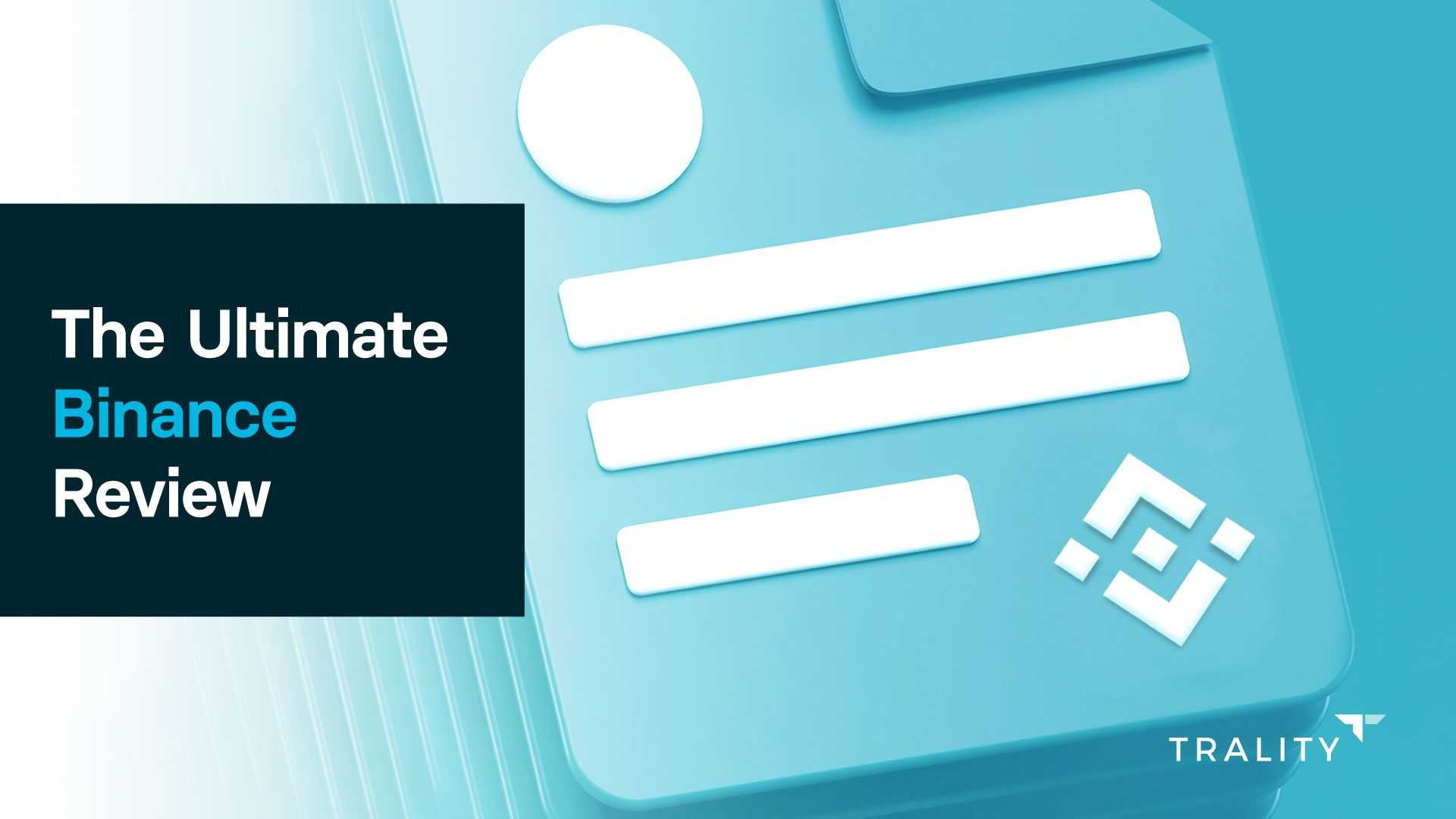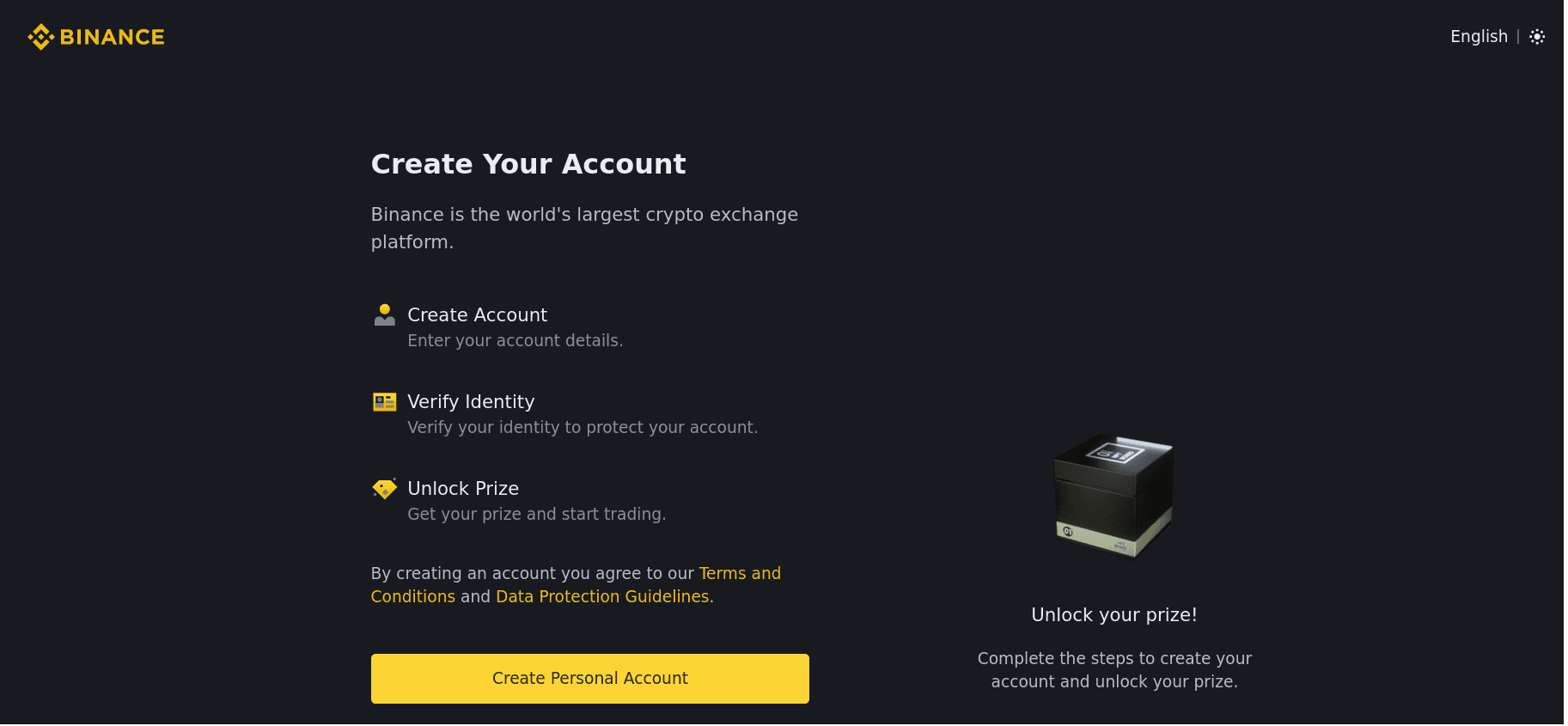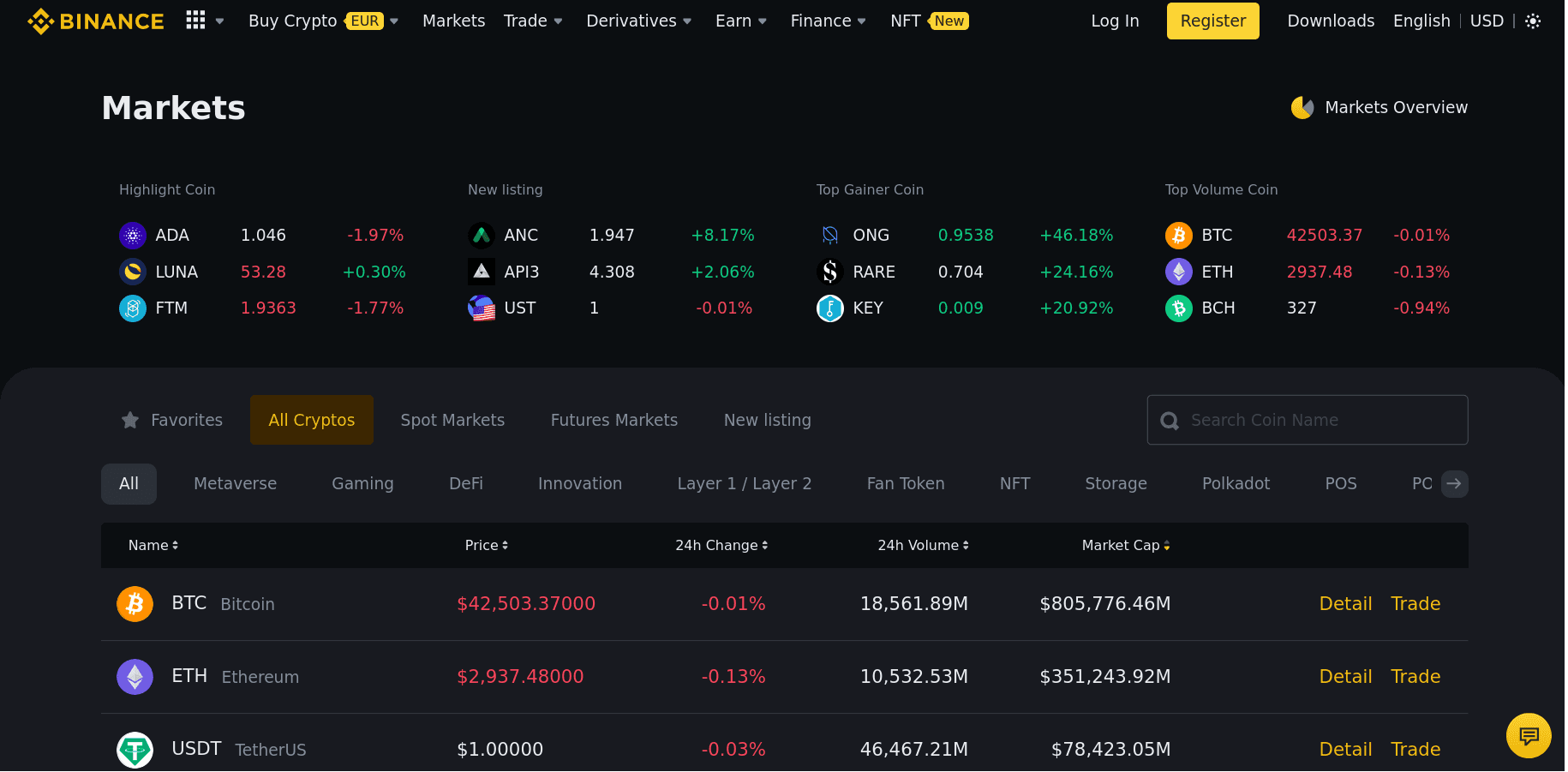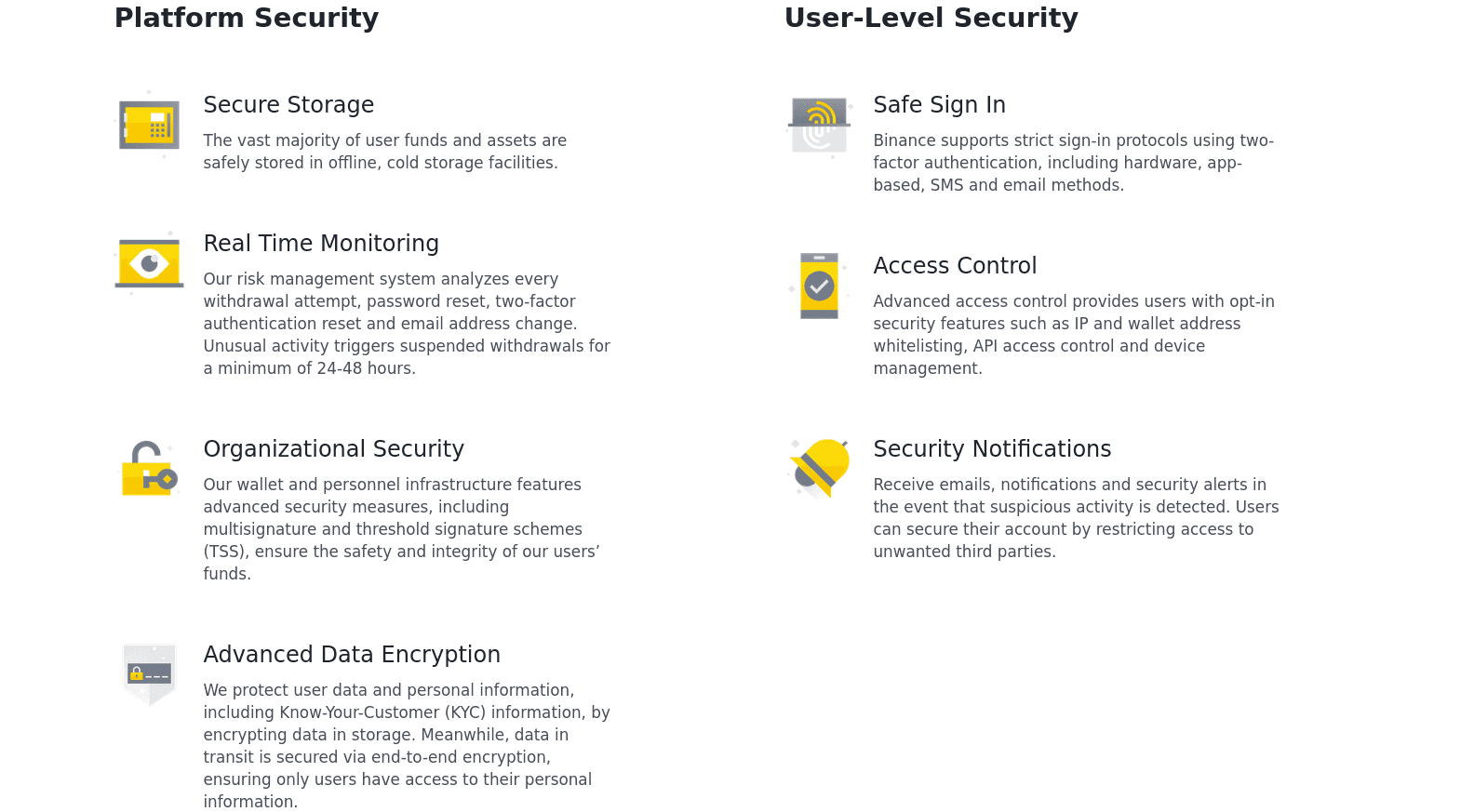The Ultimate Binance Review (2023)

MORITZ PUTZHAMMER
20 January 2023 • 14 min read

Table of contents
As the largest centralized cryptocurrency exchange in the world in terms of daily trading volume, Binance is one of the most popular choices for beginners looking to test the crypto waters as well as for experienced cryptocurrency investors. With comparatively low fees, a wide selection of cryptocurrencies and trading options, and some solid security protocols, Binance has an estimated user base of 28.6 million people (2021).
A few preliminary statistics paint an interesting picture of the exchange and its users. According to their own internal research, more than 48 percent of Binance users are hobbyists; over 15 percent of users indicate that Binance is their primary source of income; and over 90 percent of its users are males (their average age is around 35 years). The top five countries in terms of the highest numbers of users on the platform are Turkey, Russia, Brazil, Argentina, and the Philippines. And the platform experienced a crypto exchange volume of over $7.7 trillion (USD) in 2021.
However, it’s not all good news. Binance has run into regulatory issues, particularly in the US and UK (a problem experienced by many in the crypto space); it has suspended futures and derivatives products offerings across Europe; and it has even shut down its Singapore trading platform.
In the following Binance review, we take a comprehensive look at the platform, including its history, how it works, its cryptocurrency offerings, key features such as connecting algorithmic trading bots, its security protocols, and customer service.
For our US-based readers, this Binance review will also examine the fee structure and selection of available cryptocurrencies on Binance.US (including State-specific information).
Key Takeaways
- As the largest cryptocurrency exchange in the world, Binance is trusted by more traders than any other exchange and has some of the lowest fees in the industry.
- Binance caters to both beginners through its user-friendly interface as well as to more seasoned traders interested in more extensive trading options.
- With strict sign-in protocols using two-factor authentication, including hardware, app-based, SMS and email methods, Binance takes the security of its users’ funds and data seriously.
- Binance trading bots enable traders to maximize their profits by avoiding the costly pitfalls of manual trading.
A Brief Company Overview of Binance
Behind every great (or significant) FinTech company, there is usually a charismatic self-starter (or team of self-starters) and Binance is no exception. Despite its enviable growth and market dominance, all roads invariably lead back to one man: Changpeng Zhao.
Changpeng Zhao – Burger flipper to Crypto Billionaire
According to a Forbes profile, “The Chinese-Canadian coder cut his teeth building high-frequency trading systems for Wall Street's flash boys.” He’s now worth $100 Billion (2022), placing him among the world’s wealthiest individuals. Let’s take a closer look at the man, the myth, the legend.
Founded by Zhao (commonly referred to as “CZ” by those in the space), Binance began life in Shanghai back in 2017. At the time, Zhao was the founder and CEO of BijieTech, a company that provided cloud-based exchange systems to exchange operators. Prior to BijieTech, he was the co-founder and CTO of OKCoin, which launched their international site and futures trading platform during his tenure. Before OKCoin, Zhao was the Head of Technology and the third person to join the Blockchain.info team. In 2005, CZ co-founded Fusion Systems, a company that specializes in ultra-low-latency trading systems for brokers (the company was founded in Shanghai and now has offices in Tokyo, Hong Kong, and Los Angeles).
Right. We know that he has an impressive CV. But what about his burger-flipping days? It seems that his story is something of a rags-to-riches story. Born in Jiangsu, China, his father was a professor, but eventually emigrated to Vancouver in the late 1980s. According to various profiles, Zhao flipped burgers at McDonald’s as a teenager and worked overnight shifts at a petrol station in order to contribute to the family’s household income, before studying computer science at Montreal’s McGill University.
Binance’s 2017 Initial Coin Offering (ICO)
In Binance’s 2017 white paper, the exchange took pains to differentiate itself within the market, identify problems and risks, outline its platform’s features, and clarify its team members, investors and advisors. Let’s travel back in time in our Binance review to get a glimpse of their vision before the billions:
“In our view, there are fundamentally two different types of exchanges: the ones that deal with fiat currency; and the ones that deal purely in crypto. It is the latter one that we will focus on. Even though they are small now, we strongly believe that pure crypto exchanges will be bigger, many times bigger, than fiat based exchanges in the near future. They will play an ever more important role in world finance and we call this new paradigm Binance; Binary Finance. With your help, Binance will build a world-class crypto exchange, powering the future of crypto finance.”
As a new player in the world of crypto, Binance sought to address a number of specific problems with pre-existing exchanges, including poor technical architecture, an insecure platform, poor market liquidity, poor customer service, and poor internationalization and language support.
Binance’s July 2017 ICO had a maximum of 200 BNB tokens, offering 10% (approximately 20 million) BNB tokens to angel investors, 40% (80 million) to the founding team, and the remaining 50% (100 million) to various participants through the ICO process. As Investopedia describes, “Almost half the funds raised during the ICO process were intended to be used for Binance branding and marketing, while around one-third were used to build the Binance platform and perform necessary upgrades to the Binance ecosystem.” Binance’s coin (BNB) initially ran on the Ethereum blockchain using the ERC 20 standard, it launched its own Binance Chain in April 2019, with BNB residing on its native chain ever since.
Binance – How It Works
So how does Binance actually work? How long does it take to set up a Binance account? What do you need to register with Binance? Do you need a bank account to open an account with Binance?
Now that you know a bit more about the history of Binance and its founder, you are likely wondering about the “nuts and bolts” of opening an account, the user interface, and fees.
Binance Review
It’s now time to take a deep dive into the finer points of getting started with Biance and trading on Binance. And a brief note about language: if you speak it, then there’s an excellent chance that Binance’s website can be viewed in your language.
Sign Up Process
Signing up to Binance is quick and easy. In fact, it only involves three simple steps: 1) creating your account, 2) verifying your identity, and 3) deposit crypto.

Step 1: Register Account
Register a Binance account from the Binance App, Binance website, or Binance Desktop App with your email or phone number. If you have a Referral ID, then you can enter it during this step.
Step 2: Complete Verification
You can complete Identity Verification on your Binance account to unlock the fiat deposit and withdrawal limits. This process typically takes a few minutes to complete, which includes verifying your basic account information, providing ID documentation, and uploading a selfie/portrait.
Be sure to secure your Binance account. While the platform does everything to keep your account secure, you also have the power to increase the security of your Binance account. See their Security Tips for more information.
Step 3: Deposit Crypto
If you already hold crypto in another wallet, you can deposit them into your Binance Wallet. Please refer to Binance’s FAQ here for more information on how to deposit and withdraw crypto on your Binance account.
Can You Buy Bitcoin with Your Bank Account?
The short answer? Yes! With Binance P2P, you can buy Bitcoin as well as other cryptocurrencies using your bank account (SEPA, SWIFT). According to Binance’s website: “If you’re looking for a quick and convenient way to buy Bitcoin and other cryptocurrencies, try linking your bank account. Though Binance P2P supports more than 300 payment methods, including debit card, credit card and in-person cash payments, bank transfer remains one of the most popular payment methods on the platform.”
Can You Buy Crypto with a Credit/Debit Card?
Yes, Binance users can use their credit or debit cards to buy crypto. In fact, Binance has a dedicated page with a helpful video, screenshots, and even answers to important questions related to the entire process.
User Interface (UI)
A user interface can often make or break the experience of using any given platform. Get it right and users will spend their time on the platform, navigating through various menus and features for extended periods of time. Get it wrong and users will grow frustrated, impatient, and eventually migrate to a more user-friendly exchange.
How does Binance’s UI stack up? Quite well, it turns out.
Binance Desktop
According to Binance, most users access the platform through their web browsers. As they write, “But while this method is something that many are accustomed to, we want to offer the Binance desktop app as an alternative or complement to your crypto trading needs on the computer.” If you’d prefer to trade from your desktop, then head to the Binance Desktop App download page, where you’ll find options for your Windows, MacOS, or Linux computer.

There are a number of advantages of using the desktop version (as opposed to your web browser), including 1) faster loading times and smoother user experience for a better trading experience; 2) more secure access to Binance without phishing or other browser-related risks; 3) convenient and secure log-in using QR code scanning; 4) switching feature between multiple accounts; and 5) access to Binance almost anywhere in the world.
And what about the experience of actually using it? Once you’re actually logged into the desktop version, you’ll quickly realize how easy it is to navigate the user-friendly UI. On the left-hand side of the screen, you’ll see, for example, options for markets, buying crypto, trades, and futures, while at the bottom of the screen you can click the cog wheel for additional settings. Users even have the option of creating keyboard shortcuts “to navigate between components or perform tasks without using a pointing device,” the purpose of which is “to make your trading experience even more convenient as you can customize the list of key combinations to be used for trade executions.”
Binance Mobile App
There are various ways to download the Binance mobile app. However, keep in mind that you’ll also want to download and install the Binance Authenticator, which generates two-step verification codes and therefore increases your account security (more on security below).

After you’ve signed into your account, you’ll be greeted by the home screen, which contains a wealth of easily navigable menus and options, from markets, trades, futures, and wallets to options for deposits, referrals, and P2P Trading, among other things. Scrolling down reveals more important information, such as Binance Earn, and a Rankings List of cryptocurrencies grouped according to various categories (e.g., “Hot,” “Gainers,” “Losers,” and 24h Vol”).
The overall experience of using Binance’s mobile app can best be described as seamlessly intuitive.
Fees
No Binance review would be complete without a detailed examination of the platform’s fee structure. As mentioned at the beginning of this article, Binance has comparatively low fees, which is one of the reasons why it is the largest cryptocurrency exchange in the world by daily trading volume.
The following transparent fee structure is taken directly from Binance’s website, with additional information easily accessible via the additional links:
Deposit Fees
- Free. There are no fees for crypto deposits.
Trading Fees
- If you do not use BNB (Binance Coin) to pay your trading fees, each trade will carry a standard fee of 0.1%.
- Using BNB for transaction fees applies a discount to your trading fee. By default, if you hold BNB in your account, your trading fees will be automatically subtracted from your BNB balance. (See How to Use BNB to Pay for Fees and Earn 25% Discount)
- Please refer to the Fee Schedule to check your account's Trading Fee Level and other information.
- For Margin trading fees and data, please refer to Margin Data.
- For Futures trading fees and data, please refer to Binance Futures Fee Structure & Fee Calculations.
Withdrawal Fees
- Binance's withdrawal fees are dynamic and automatically adjusted based on the status of the market.
- For current withdrawal fees, please refer to the Fee Schedule.
Which Cryptocurrencies Can You Trade on Binance?
For global traders, you can invest in over 500 cryptocurrencies on Binance, including all of the most popular coins, using 1,933 pairs (some of which you won’t find on rival exchanges). And keep an eye on Binance’s newest crypto listings in their “Announcements” section.

Among the hundreds of cryptocurrencies available are Aave (LEND), Basic Attention Token (BAT), Binance Coin (BNB), Binance USD (BUSD), Bitcoin (BTC), Bitcoin Cash (BCH), BitTorrent (BTT), Cardano (ADA), Compound (COMP), Cosmos (ATOM), COTI (COTI), Dash (DASH), Dogecoin (DOGE), EOS (EOS), Ethereum (ETH), Hedera Hashgraph (HBAR), ChainLink (LINK), Litecoin (LTC), Maker (MKR), MATIC Network (MATIC), NANO (NANO), Paxos Standard (PAX), Qtum (QTUM), Ripple (XRP), Solana (SOL), Stellar’s Lumen (XLM), Synthetic Network Token (SNX), TomoChain (TOMO), Tron’s TRX (TRX), TrueUSD (TUSD), USD Tether (USDT), VeCHain (VET), and Zilliqa (ZIL).
Fees and Available Cryptocurrencies on Binance.US
For our US-based readers, the fee structure and availability of coins differs, often considerably, from Binance’s global offerings. However, you still have plenty of options from which to choose.
Here’s a brief look at the trading fee structure of Binanace.US (deposit and withdrawal fees can also be found via the link):
In general, there is a 0.1% spot trading fee and a 0.5% Buy/Sell Crypto fee. By default, if you hold BNB in your account, your trading fees will be automatically deducted from your BNB balance. You get a 25% discount (subject to change) from your trading fee if you use BNB to pay for trading fees (read more).
Trading fees are determined based on your trading volume over a 30-day period (in USD) and your daily BNB balance (detailed BNB holding rules). At 0:00 AM (EST) every day, your trading volume over the past 30-day period and your daily BNB balance are evaluated. Your Trading Fee Level and corresponding Maker/Taker fees will be updated approximately one hour later.

Recently, Binance.US announced what they call “Dynamic Crypto Withdrawal Fees” for ETH and ERC-20 Tokens. As they explain, “Withdrawing funds from Binance.US may incur transaction fees, which are estimated based on network transaction costs. Going forward, rather than charging a fixed fee, Binance.US will charge customers a dynamically generated withdrawal fee for Ether (ETH) and ERC-20 tokens.”
Some key takeaways include a flat 0.1% fee for spot trades; 0.5% fee for instant buy/sell; $10 minimum trade; and the option for recurring investments, for dollar-cost averaging
As far as crypto offerings for US-based traders, there are just under 70 coin offerings (the full list can be found here). However, the platform is not available in Connecticut, Hawaii, Idaho, Louisiana, New York, Texas, or Vermont.
Binance Key Features
The platform offers a wide range of interesting options for traders, so much so that separate Binance review articles would be needed to cover them all. However, you can find detailed information under the following Binance categories on their website: “Trading” (e.g., strategy trading, swap farming, fan tokens), “Derivatives”, “Earn (Binance Earn, Liquidity Farming, Staking, Binance Pool), “Finance” (Binance Visa, Crypto Loans, Binance Pay), and even a new category for NFTs.
One of Binance’s most important and under-utilized features is the ability to connect algorithmic trading bots to the exchange. Approximately 90% of crypto traders lose money, with most traders quitting within their first year of trading. And the primary reason why they lose money is that they’re trading manually instead of harnessing the power of crypto trading bots, which offer emotionless trading, higher trading speeds, backtesting and paper trading options, risk diversification, and consistent overall trading discipline.
So what is a Binance trading bot? Precisely that: a Binance trading bot is a trading bot that you create using another platform such as Trality and then connect and deploy it on Binance. You really only need two things to get started right away: 1) a free account on Binance and 2) a free account with Trality – that’s it! By using a trading bot on Binance, you are effectively turbocharging your trading, taking it to the next level through the power of automation.
Wall Street has been using algorithmic trading for decades, while the vast majority of non-institutional traders are still trading manually (often day trading). You can read more about creating a Binance trading bot using Trality in our detailed article “Create Your Own Binance Trading Bot for Free,” where you’ll learn about the various moving parts of a trading bot, how to configure and optimize them, and then connect them to Binance.
Security
With news of account hacks and Bitcoin laundering, traders are right to be concerned about the safety of their funds and private information. Let’s start off with the bad news first: hacks can and often do happen. Virtually no one in the space is immune from them. But, then again, hacks and data breaches happen all the time in the credit card industry, banking industry, communications industry (think: Yahoo), and social media companies (Facebook, anyone?).
Now for the good news: as the largest crypto exchange in the world, Binance takes security extremely seriously. As they indicate on their website, “Binance supports strict sign-in protocols using two-factor authentication, including hardware, app-based, SMS and email methods. Advanced access control provides users with opt-in security features such as IP and wallet address whitelisting, API access control and device management.”

In addition, Binance takes great pains to work collaboratively with international partners to ensure global crypto compliance, with measures such as Know Your Customer (KYC), Anti-Money Laundering (AML), Law Enforcement Request System, Responsible Trading Program, Binance Tax Reporting Tool, Reduced Leverage For New Users.
As mentioned, hacks can and do happen, and Binance was hit in 2019. However, they have worked tirelessly to aid with funds recovery efforts and have ongoing initiatives to combat cybercrime.
Can Binance be hacked again? Virtually anything connected to the Internet can be hacked. Is Binance secure to hold coins? Is Binance safe? In a word: definitely.
Contacting Binance Support Center
If you have a Binance account, the quickest and easiest way to get in touch with their team is by contacting them directly by chat. You’ll see a chat icon on the right side of your screen, which will initiate a chat session with Binance’s support team.
In a pinch and don’t feel like chatting? There are a number of ways of getting
in touch with Binance, including submitting an online request via their website, Facebook, Twitter, other social networks (e.g., Telegram, Instagram, YouTube, Reddit, VK), and their Help Center.
Conclusion
Binance is the largest cryptocurrency exchange in the world and for good reasons, many of which we’ve outlined in this Binance review.
As Investopedia has written, “Binance’s fees are among the lowest in the industry. While U.S.-based users will pay slightly more on Binance.us, its fees are still lower than what you’d see on other leading platforms. Binance employs a maker/taker fee structure, and fees vary based on trading volume and Binance Coin (BNB) balance. In general, higher volume trades are subject to lower fees.” Users can even get fee discounts by using Binance (BNB) coins in trades, through referral bonuses, or reaching very important person (VIP) status by trading a certain amount of assets.
While Binance has run into regulatory issues, those issues are not necessarily Binance-specific, but rather concern the lack of clearly defined standards regarding cryptocurrencies across various countries throughout the world.
Is Binance good for beginners? Absolutely.
With approximately 28.6 million Binance users, the numbers speak for themselves.





